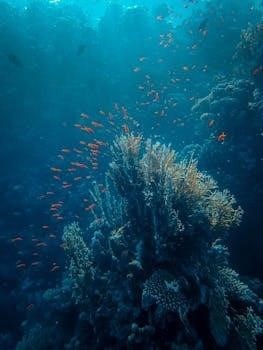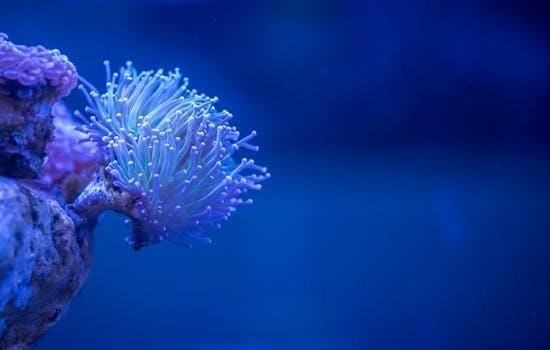
Aquarium Plant Guide for Beginners
Embark on a journey into the captivating world of planted aquariums! This guide unveils essential knowledge for aspiring aquascapers. Discover how to cultivate thriving aquatic ecosystems. We will explore easy-to-care-for plants, planting techniques and maintenance. Learn to troubleshoot common issues.
Welcome to the enchanting realm of planted aquariums, where aquatic flora transforms a simple fish tank into a vibrant, self-sustaining ecosystem. A planted aquarium goes beyond mere decoration; it’s a delicate balance of nature, art, and science. Imagine a miniature underwater world, teeming with life, where fish glide among lush green foliage, creating a mesmerizing spectacle.
This guide is designed for beginners eager to explore the joys of creating their own planted paradise. We’ll unravel the mysteries of aquatic plants, demystifying the process of selecting, planting, and maintaining them. From understanding the basic requirements of light, nutrients, and carbon dioxide to troubleshooting common issues, we’ll equip you with the knowledge and confidence to cultivate a thriving planted aquarium.
Whether you’re a seasoned aquarist or a complete novice, this introduction will set the stage for a rewarding journey into the captivating world of planted aquariums. Prepare to be amazed by the beauty and tranquility that these underwater gardens can bring to your home.
Benefits of Adding Plants to Your Aquarium
Incorporating live plants into your aquarium offers a multitude of advantages, extending far beyond mere aesthetic appeal. Firstly, plants act as natural filters, absorbing harmful substances like nitrates and ammonia produced by fish waste, thereby improving water quality and reducing the frequency of water changes. This creates a healthier environment for your aquatic inhabitants, minimizing stress and disease.
Secondly, plants oxygenate the water through photosynthesis, providing essential oxygen for fish and beneficial bacteria. This process helps maintain a balanced ecosystem, promoting the overall well-being of your aquarium. Furthermore, plants offer shelter and breeding grounds for fish, mimicking their natural habitat and encouraging natural behaviors.
In addition to these biological benefits, plants also enhance the visual appeal of your aquarium, creating a more engaging and visually stimulating environment. The vibrant colors and diverse textures of aquatic plants add depth and dimension to your underwater landscape, transforming it into a captivating work of art. Ultimately, adding plants to your aquarium is a win-win situation, benefiting both your fish and your viewing pleasure.
Key Factors for Choosing Beginner-Friendly Plants
Selecting the right plants is crucial for a successful and enjoyable planted aquarium experience, especially for beginners. Several key factors should be considered to ensure that the chosen plants are easy to care for and can thrive in your aquarium environment.
Firstly, lighting requirements are paramount. Opt for low-light plants that can flourish under standard aquarium lighting, avoiding the need for expensive and complex lighting systems. Secondly, consider water parameters such as pH, temperature, and hardness. Choose plants that are adaptable to a wide range of water conditions, minimizing the need for constant adjustments.
Growth rate is another important factor. Select plants with slow to moderate growth rates, as they require less frequent trimming and are less likely to outcompete other plants for nutrients. Furthermore, consider the plant’s nutrient requirements. Opt for plants that can thrive with minimal fertilization, as excessive fertilization can lead to algae blooms and other problems.
Finally, research the plant’s compatibility with your fish species. Ensure that the chosen plants are not toxic or easily consumed by your fish, creating a harmonious and balanced ecosystem. By carefully considering these factors, you can select beginner-friendly plants that will thrive in your aquarium and provide years of enjoyment.
Top 10 Easy-to-Care-For Aquarium Plants
For beginners venturing into the world of planted aquariums, selecting hardy and low-maintenance plants is key to success. Here’s a curated list of the top 10 easy-to-care-for aquarium plants that can thrive even with minimal attention⁚
Java Fern⁚ Adaptable to various conditions, it attaches to rocks or driftwood.
Anubias⁚ Known for its resilience and slow growth, perfect for low-light setups.
Java Moss⁚ A versatile plant that can be used as a carpet or attached to decorations.
Amazon Sword⁚ A classic choice, providing lush green foliage with minimal care.
Vallisneria⁚ A fast-growing plant that adds vertical interest to the aquarium.
Cryptocoryne⁚ Undemanding and adaptable, available in various sizes and colors.
Marimo Moss Ball⁚ A unique algae ball that requires minimal maintenance.
Hornwort⁚ A fast-growing plant that oxygenates the water and provides shelter for fish.

Water Wisteria⁚ Adaptable to different water conditions and lighting levels.
Bacopa⁚ A hardy plant that can tolerate a wide range of conditions.
These plants are excellent choices for beginners. They require minimal lighting, fertilization, and CO2 supplementation. Enjoy the beauty of a planted aquarium without the complexities.
Vallisneria⁚ A Great Option for Beginners
Vallisneria, often called “tape grass,” stands out as an excellent choice for beginners venturing into planted aquariums. Its adaptability and ease of care make it a forgiving plant for those new to the hobby. This plant thrives in a variety of water conditions. It tolerates low to moderate lighting, making it suitable for standard aquarium setups.
One of the key benefits of Vallisneria is its rapid growth rate. It quickly establishes itself in the aquarium. This provides a natural and aesthetically pleasing backdrop. Its long, ribbon-like leaves create a swaying effect in the water. This adds movement and visual appeal to the tank.
Vallisneria also contributes to a healthy aquarium ecosystem. It aids in oxygenating the water and absorbing excess nutrients. This helps to reduce algae growth and improve water quality. It propagates easily through runners, allowing it to spread and create a dense, natural-looking environment.
This plant is a great choice for beginners looking to add a touch of greenery to their aquarium. Its low maintenance requirements and beneficial properties make it a valuable addition to any beginner’s tank.
Java Fern⁚ Detailed Care Guide
Java Fern (Microsorum pteropus) is a popular and resilient aquarium plant, celebrated for its ease of care and unique appearance. This detailed guide provides essential information for successfully cultivating Java Fern in your aquarium.
Unlike many aquatic plants, Java Fern doesn’t require planting in the substrate. Instead, it thrives when attached to rocks, driftwood, or other decorations using thread, glue, or fishing line. This epiphytic nature simplifies its placement and prevents rhizome rot, a common issue when planted in the substrate.
Java Fern prefers low to moderate lighting conditions, making it suitable for tanks with minimal lighting setups. Excessive light can promote algae growth on its leaves. Water parameters are not critical, as it adapts to a wide range of pH and temperature levels.
Regular pruning of older or damaged leaves encourages new growth and maintains its aesthetic appeal. Propagation is straightforward; simply divide the rhizome or detach plantlets that develop on the leaves. Java Fern’s hardiness and adaptability make it an excellent choice for beginners. It contributes to a thriving and visually appealing aquarium environment.
Anubias⁚ Planting and Maintenance Tips
Anubias are hardy and versatile aquarium plants, prized for their slow growth and minimal care requirements. Proper planting and maintenance are crucial for their long-term health and appearance.
Like Java Fern, Anubias plants are epiphytes. They thrive when attached to rocks, driftwood, or other decorations. Avoid burying the rhizome (the thick stem from which leaves and roots grow) in the substrate, as this can cause it to rot and kill the plant. Use thread, super glue or fishing line to secure the plant.
Anubias prefer low to moderate lighting. Intense light can lead to algae growth on their leaves. Regular water changes and proper filtration help maintain water quality. Nutrient deficiencies are rare due to their slow growth rate. However, occasional fertilization with a liquid fertilizer can promote healthy growth.
Remove any dead or damaged leaves to prevent decay and maintain a clean appearance. Propagation is achieved by dividing the rhizome into smaller sections. Each section should have several leaves and roots. Anubias are excellent choices for beginner aquarists, providing lush greenery with minimal effort.

Red Aquarium Plants for Adding Color
Infuse your aquarium with vibrant hues by incorporating red aquarium plants. These plants introduce striking visual contrast, enhancing the overall aquascape. However, cultivating red plants often requires more attention compared to their green counterparts.
Red coloration in aquatic plants typically results from pigments like anthocyanins. These pigments require specific environmental conditions to develop fully. Adequate lighting is crucial; many red plants need moderate to high-intensity light to showcase their colors. Supplementing with iron-rich fertilizers can further intensify the red tones.
Maintaining optimal water parameters is essential. CO2 injection may be necessary to support robust growth and prevent algae outbreaks. Red plants like Alternanthera Reineckii Mini add a splash of color. Ludwigia Repens offers varying shades of red depending on light intensity.
Regular pruning helps maintain the desired shape and encourages bushier growth. Be mindful of nutrient levels; deficiencies can hinder coloration and overall health. With careful planning and dedicated care, red aquarium plants can transform your tank into a captivating underwater display.
How to Plant Aquarium Plants⁚ A Step-by-Step Guide
Planting aquarium plants correctly is crucial for their survival and growth. Proper technique ensures they establish roots and thrive in their new environment. Follow this step-by-step guide for successful planting.
First, prepare your substrate. Ensure it’s clean and nutrient-rich if planting rooted species. Gently rinse the substrate to remove any debris. Next, prepare the plants. Remove any dead or damaged leaves. For stem plants, trim the bottom inch to encourage root growth.
Use aquascaping tools like tweezers to handle delicate plants. Create a small hole in the substrate. Gently insert the plant’s roots, ensuring they are fully covered. For rhizome plants like Java Fern and Anubias, do not bury the rhizome; instead, attach it to rocks or driftwood using thread or glue.
Space plants appropriately to allow for growth. Avoid overcrowding, which can restrict light and nutrient access. After planting, gently fill the tank with dechlorinated water. Monitor the plants closely for signs of stress or nutrient deficiencies. Provide adequate lighting and CO2 supplementation if needed.
Troubleshooting Common Issues with Beginner Plants

Even with hardy beginner plants, issues can arise. Identifying and addressing these problems promptly is essential for maintaining a healthy planted aquarium. One common issue is algae growth. This often results from excessive light, nutrient imbalances, or poor water quality. Reduce light exposure, perform regular water changes, and consider adding algae-eating fish or invertebrates.
Another problem is yellowing or browning leaves. This can indicate nutrient deficiencies. Ensure your plants receive adequate micronutrients and macronutrients. Use liquid fertilizers or root tabs to supplement essential elements.
Slow growth is also a frequent concern. Check your lighting. Many beginner plants require moderate to high light. Insufficient CO2 can also limit growth. Consider adding a CO2 injection system if necessary.
Melting, or the rapid disintegration of plant leaves, often occurs when plants are first introduced to a new environment. Be patient. Plants often recover as they adapt. Remove any decaying leaves to prevent water contamination. Regular monitoring and prompt action will keep plants healthy.
Maintaining a Balanced Aquarium Ecosystem for Plant Growth

A thriving planted aquarium relies on a balanced ecosystem. This involves maintaining optimal water parameters, providing adequate nutrients, and ensuring proper lighting. Regular water changes are crucial for removing excess organic waste and replenishing essential minerals. Aim for weekly changes of 25-50%, depending on the bioload.
Nutrient balance is also key. Plants need macronutrients like nitrogen, phosphorus, and potassium, as well as micronutrients like iron, manganese, and zinc. Use fertilizers to supplement these nutrients. Monitor nutrient levels with test kits to avoid deficiencies or excesses.
Light is essential for photosynthesis. Provide the appropriate light intensity and duration for your chosen plants. Overlighting can cause algae blooms. Underlighting can stunt plant growth.
CO2 is another critical element. Plants utilize CO2 during photosynthesis. Adding a CO2 injection system can significantly enhance plant growth. Proper filtration helps remove debris and maintain water clarity. A balanced ecosystem promotes healthy plant growth.